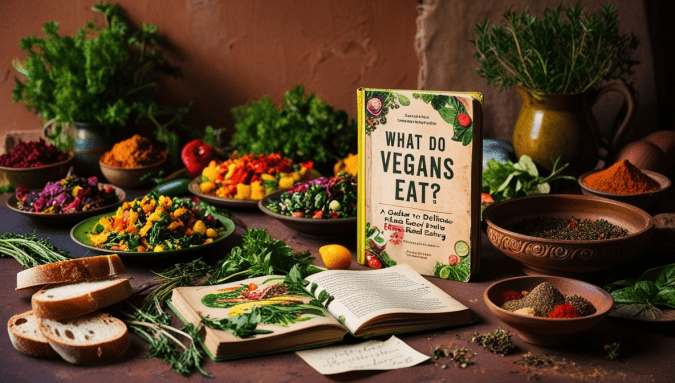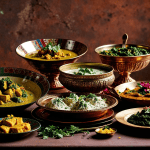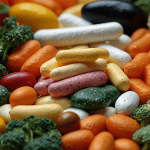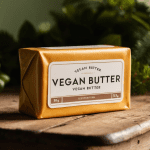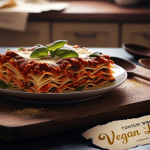If you’re new to veganism or simply curious, you might wonder what vegans eat beyond the common assumption of salads. A vegan diet excludes all animal products, including meat, dairy, eggs, and honey, but this doesn’t mean it’s restrictive or lacking in flavor. In fact, a vegan diet is packed with a variety of vibrant foods that offer an abundance of nutrients, colors, and flavors. Here’s a guide to what vegans eat, along with tips for creating balanced, satisfying meals.
1. Fruits and Vegetables
Fruits and vegetables are the foundation of a vegan diet, providing essential vitamins, minerals, antioxidants, and fiber. They can be enjoyed fresh, frozen, or cooked in a variety of ways.
- Fruits: Bananas, berries, apples, oranges, mangoes, grapes, avocados, and melons are all popular choices. Many vegans love to use fruits in smoothies, salads, desserts, or as quick snacks.
- Vegetables: Leafy greens, bell peppers, zucchini, broccoli, carrots, and mushrooms add nutrition and flavor to any meal. Roasting, stir-frying, steaming, and adding them to soups are popular ways to enjoy them.
2. Grains and Starches
Grains and starches are excellent sources of energy and important nutrients like fiber, iron, and B vitamins. They’re also incredibly versatile and can form the base of countless meals.
- Whole Grains: Brown rice, quinoa, oats, bulgur, barley, and farro are whole grains that provide sustained energy. Vegans often use these grains in salads, bowls, and as sides.
- Pasta and Bread: Most types of pasta and bread are naturally vegan. Whole-grain and legume-based pastas (like chickpea or lentil pasta) are great for added protein.
- Potatoes and Root Vegetables: Potatoes, sweet potatoes, and yams are filling, fiber-rich, and perfect for baking, mashing, or roasting.
3. Legumes and Beans
Legumes are key to a vegan diet because they’re rich in protein, fiber, iron, and other essential nutrients. They’re a satisfying, plant-based protein source that can be prepared in many ways.
- Types of Legumes: Chickpeas, black beans, lentils, and kidney beans are among the most popular, each with its own unique flavor and texture.
- Tofu and Tempeh: Made from soybeans, tofu and tempeh are protein-packed and extremely versatile. Tofu can be scrambled, grilled, baked, or blended into sauces, while tempeh is firmer and great for stir-fries and sandwiches.
- Edamame: Young soybeans, usually served steamed or boiled, make a great snack or addition to salads and bowls.
4. Nuts and Seeds
Nuts and seeds provide healthy fats, protein, and a variety of vitamins and minerals. They can be eaten on their own, used in sauces, or sprinkled over dishes for a nutritious crunch.
- Popular Nuts: Almonds, walnuts, cashews, pecans, and pistachios are rich in heart-healthy fats. Cashews, in particular, are often used to make creamy sauces and dairy substitutes.
- Seeds: Chia seeds, flaxseeds, pumpkin seeds, and hemp seeds are nutrient-dense, providing omega-3 fatty acids, protein, and fiber. Chia and flaxseeds can be used to make vegan egg replacements in baking.
5. Dairy Alternatives
With the rise of veganism, there are now numerous dairy alternatives available that are made from plants and often fortified with vitamins and minerals.
- Plant-Based Milks: Almond, soy, oat, coconut, and cashew milks are common options, each offering different textures and flavors.
- Vegan Cheese: There are many varieties of vegan cheese, made from nuts, soy, or coconut oil, and designed to melt, stretch, and taste like dairy cheese.
- Yogurt Alternatives: Dairy-free yogurts, usually made from almond, coconut, or soy, are available in plain or flavored varieties.
6. Meat Substitutes
Vegan meat substitutes make it easy to enjoy familiar textures and flavors without animal products. They are typically made from ingredients like soy, pea protein, or wheat gluten.
- Seitan: Made from wheat gluten, seitan is high in protein and has a meat-like texture, often used in vegan sandwiches, stir-fries, and roasts.
- Beyond Meat and Other Plant-Based Meats: Brands like Beyond Meat and Impossible Foods offer plant-based burgers, sausages, and other meats that closely mimic the taste and texture of animal meat.
- Jackfruit and Mushrooms: Jackfruit and mushrooms are natural meat substitutes due to their texture, often used in vegan tacos, sandwiches, and stews.
7. Oils and Healthy Fats
Healthy fats are important in any diet, and vegans get their fats from plant-based oils, nuts, seeds, and avocados.
- Oils: Olive oil, coconut oil, avocado oil, and flaxseed oil are commonly used in vegan cooking and for drizzling over salads.
- Avocados: Rich in healthy fats and fiber, avocados are a staple in vegan diets and are perfect for spreading, slicing, or adding to salads and bowls.
8. Herbs, Spices, and Condiments
Herbs, spices, and condiments bring plant-based meals to life, adding layers of flavor and complexity without relying on animal products.
- Herbs and Spices: Basil, oregano, cumin, turmeric, paprika, and garlic are some of the many spices that vegans use to create rich and flavorful dishes.
- Condiments: Soy sauce, tahini, sriracha, nutritional yeast, and miso are common in vegan cooking, providing umami and enhancing flavor profiles.
- Nutritional Yeast: Known for its cheesy flavor, nutritional yeast is often used to make vegan cheese sauces or sprinkled on top of popcorn and pasta.
9. Sweeteners and Vegan Desserts
Many desserts can be vegan, from cakes and cookies to ice creams and pies. There are also a variety of natural sweeteners available.
- Sweeteners: Agave nectar, maple syrup, and coconut sugar are popular vegan sweeteners that add natural sweetness to desserts and beverages.
- Desserts: Dairy-free ice creams, coconut milk-based puddings, and baked goods made without eggs or dairy are widely available and easy to make at home.
Tips for Balanced Vegan Meals
Creating a balanced vegan meal is key to ensuring you get all essential nutrients. Here are some tips to make vegan meals filling and nutritious:
- Include a Source of Protein: Beans, lentils, tofu, tempeh, and quinoa are great sources of plant-based protein.
- Incorporate Whole Grains: Whole grains like brown rice, oats, and quinoa provide energy and keep you full longer.
- Add Healthy Fats: Include nuts, seeds, and avocados for healthy fats, which are essential for nutrient absorption.
- Load Up on Vegetables: Vegetables provide vitamins, minerals, and fiber. Aim for a variety of colors to get a range of nutrients.
- Use Fortified Foods or Supplements: Consider fortified foods or supplements for nutrients like vitamin B12, vitamin D, and omega-3 fatty acids.
A vegan diet is rich, diverse, and full of possibilities. Vegans enjoy a wide range of fruits, vegetables, grains, legumes, nuts, and seeds, as well as an abundance of delicious plant-based dairy and meat alternatives. Whether you’re interested in veganism for health, environmental, or ethical reasons, this diet offers a nutritious way to meet your needs. With a little planning and creativity, you can enjoy satisfying, balanced meals that support a healthy lifestyle.
